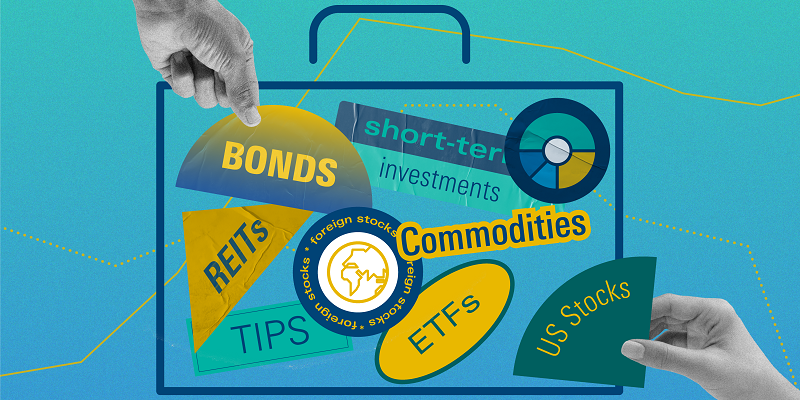Diversification: The Key to Successful Investing
Introduction Investing wisely is crucial for long-term financial success. One of the fundamental principles in investment management is diversification. It involves spreading your investments across different asset classes, industries, and geographic regions to reduce risk and optimize returns. In this article, we will explore portfolio diversification techniques, discuss the benefits of diversifying investments, and delve into diversification strategies for risk management.
Portfolio Diversification Techniques
A. Asset Allocation
One of the primary portfolio diversification techniques is asset allocation. It involves dividing your investment capital among different asset classes, such as stocks, bonds, real estate, and commodities. By diversifying across various asset classes, you can potentially minimize the impact of market fluctuations on your overall portfolio.
B. Geographic
Diversification Geographic diversification is another essential technique. By investing in different regions, you can reduce your exposure to country-specific risks. Economic, political, or regulatory changes in one country may have a limited impact on your overall portfolio if you have diversified across multiple regions.
C. Sector
Diversification Investors can also achieve diversification by spreading their investments across various industry sectors. Different sectors perform differently during economic cycles. By investing in sectors that are not strongly correlated, you can balance the performance of your portfolio and reduce the impact of a downturn in any single sector.
D. Investment
Vehicle Diversification Diversifying your investments across different investment vehicles is crucial. This can include individual stocks, exchange-traded funds (ETFs), mutual funds, bonds, and other financial instruments. Each investment vehicle carries its own risks and returns, and by diversifying, you can mitigate the impact of a single investment’s poor performance.
Benefits of Diversifying Investments
A. Risk Reduction
One of the key benefits of diversification is risk reduction. By spreading your investments, you reduce the exposure to any single investment or asset class. If one investment performs poorly, the impact on your overall portfolio is cushioned by the positive performance of other investments.
B. Enhanced Returns
Diversification not only reduces risk but can also enhance returns. By investing in a mix of assets, you can potentially benefit from different market conditions. For example, when stocks are performing well, bonds may provide stability and income. By capturing the upside of various asset classes, your portfolio has the potential for improved overall returns.
C. Smoother Ride
Diversification can lead to a smoother investment experience. The performance of different assets tends to be less correlated. During market downturns, some investments may hold their value or even appreciate, offsetting the losses in other areas. This can provide a more stable investment journey and reduce emotional stress during turbulent times.

Diversification Strategies for Risk Management
A. Rebalancing
Regular portfolio rebalancing is an essential strategy for risk management. As investments perform differently, the asset allocation in your portfolio may deviate from your desired targets. Rebalancing involves periodically selling overperforming assets and buying underperforming ones to bring your portfolio back in line with your intended asset allocation. This helps manage risk and maintain the desired level of diversification.
B. Dollar-Cost Averaging
Dollar-cost averaging is a strategy where you invest a fixed amount at regular intervals, regardless of the market conditions. By consistently investing over time, you buy more shares when prices are low and fewer shares when prices are high. This strategy helps mitigate the impact of market volatility and reduces the risk of making poor investment decisions based on short-term market fluctuations.
C. Risk Assessment and Asset Correlation Analysis
To effectively diversify your portfolio, it is important to assess the risk profile of individual investments and analyze their correlation with other assets in your portfolio. By understanding how different investments behave in relation to one another, you can make informed decisions about their inclusion in your portfolio. This analysis helps identify potential gaps in diversification and ensure that your investments work together to manage risk effectively.
Conclusion
Diversification is a cornerstone of successful investing. By implementing portfolio diversification techniques, such as asset allocation, geographic diversification, sector diversification, and investment vehicle diversification, you can optimize your investment returns while managing risk. The benefits of diversifying investments include risk reduction, enhanced returns, and a smoother investment experience. By incorporating diversification strategies like regular rebalancing, dollar-cost averaging, and thorough risk assessment, you can further strengthen your portfolio’s risk management capabilities. Remember, diversification is not a guarantee against losses, but it is a powerful tool to navigate the dynamic world of investing.









